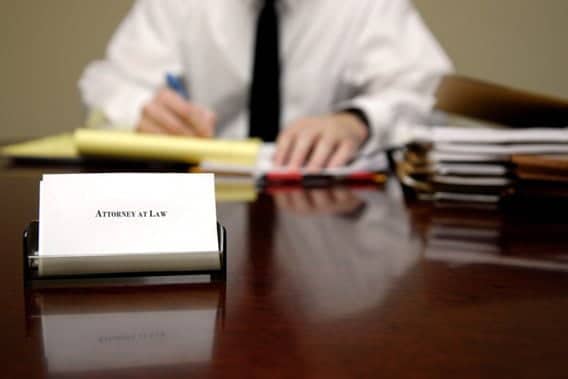A Bad Rap: Attorneys in the Popular Consciousness
It’s no secret that lawyers have a mixed reputation in the eyes of the public. While there are a great many ethical and upstanding attorneys, a few bad apples tend to ruin the bunch — at least as far as popular opinion is concerned.
Of course, this phenomenon isn’t unique to lawyers. The same can be said of many other professions: investors, car salesmen, CEOs, internet provider customer service reps, and even teachers.
In many of these professions, it’s easy to spot someone who deserves the bad rap. We’ve all had a terrible teacher (and likely knew it after just a few days in class). We’ve all encountered the sleazy car salesman as well, and many of us have read enough headlines about golden parachutes to conclude that some CEOs are more interested in benefiting themselves than improving their company and pleasing its customers.
The Role of Attorneys
Attorneys, compared to most other professions, often have to straddle a fine line between right and wrong. In many ways, that delicate balancing act is the entire point of an attorney’s professional existence: we need lawyers to make an informed case for what is right in the eyes of the law when the answer isn’t immediately clear.
In a recent case that one of our clients at LaFleur Marketing took to trial, an unlicensed driver borrowed a vehicle and caused an accident that resulted in injuries to the passengers of another car. A major question that had to be answered in that case involved who was at fault: Was it solely the unlicensed driver who caused the accident, or did the person loaning the vehicle bear some responsibility by making a less-than-prudent decision about who could use their car?
Obviously there was a great deal of controversy over these questions, which is why the case went to trial. Under the law, an act of “negligent entrustment” — such as loaning your car to an unlicensed driver — is grounds for holding someone at fault, and that’s exactly what happened in this case: the car owner’s insurance policy ended up covering the medical expenses of the innocent victims who were injured.
The legal complexities never seem to end in cases like this, and it’s often an attorney’s job in these instances to discover not only who could be at fault, but also to present additional evidence and argue that, in fact, those who could be at fault are at fault.
This is the part of the attorney’s job that people often struggle to understand; to the layperson, when a wrong has been committed, it often seems obvious who to blame. In recent memory, the Deepwater Horizon oil spill comes to mind: Who caused the oil spill? For many people, the answer seems straightforward: “the oil company!” they will say with confidence.
As with so many things in life, however, the answer according to the law is more complicated than that. Did someone at the company not adhere to safety standards? Was faulty equipment involved? Did experts mishandle geological data? Did subcontracting agencies not fulfill their obligations? Were government agencies lax in inspections? The list goes on.
It’s in this complex environment that much of an attorney’s work is done, and it’s often the case that for every attorney trying to prove that the evidence leads to one conclusion, there’s another trying to prove that the facts lead in a different direction. And rather than obscuring the truth, the system of law is meant to draw it out through this give-and-take between opposing positions.
Laws to Govern Lawyers: Interesting Legal and Ethical Quandaries
Getting to the truth often involves a great deal of ethical decision-making along the way, and nowhere does the line between right and wrong seem hazier than in criminal law. As an example, in “Handling Physical Evidence: Guidance Found in ABA Standard 4-4.6,” Law Professor Rodney J. Uphoff deconstructs several hypothetical scenarios regarding physical evidence and an attorney’s duty to represent a client.
In one such scenario, an intoxicated driver does not remember how he got home the previous night and hears about a hit-and-run accident that severely injured a pedestrian in an area he may have been driving through. Upon inspecting his car, he discovers what appears to be a bloody smear, so he contacts an attorney.
For the layperson, the proper course of action from this point may seem, circumstantially, clear-cut. The attorney, however, is faced with many dilemmas, not the least of which is whether they should test the smear to see if it’s animal or human blood — if it is even blood at all.
Even if the blood came from a human, it may not match the victim’s; even if it does match the victim’s, someone else may have been driving the car at the time of the incident, and any number of other possibilities exist. If it turns out that the driver is indeed only guilty of driving while intoxicated (which is by no means a minor offense), bringing the circumstantial evidence to the immediate attention of the police could, in fact, derail law enforcement as they try to find the actual criminal.
Fortunately, not all ethical quandaries for attorneys are so grim. For example, every state has specific ethics rules and opinions regarding advertising and marketing for law firms, which are designed to prevent misunderstandings between attorneys and their potential clients. Failing to abide by these guidelines can result in unfortunate consequences; these could include unintentionally forming an attorney-client relationship with someone whose interests conflict with another client they are already representing or inadvertently receiving confidential information from someone on the other side of a claim.
LaFleur: Ethically Representing Attorneys
The examples and issues above barely even brush the tip of the iceberg when it comes to the complexity and nuances involved in the legal profession. In the same way that you look for an attorney who focuses on and has experience in an area of law that suits your needs, attorneys need a marketing partner who focuses on their particular needs and has experience in (and appreciation for) discussing the complexities of their field.
Unfortunately, a lot of marketing agencies have a diffuse and varied client base, which means they often harbor the same stereotypes and preconceived notions about attorneys as the general public — and they have no incentive to truly invest in learning about the legal field.
At LaFleur Legal Marketing, we find the legal system fascinating and deeply appreciate the work that attorneys do to safeguard our rights as well as the health and safety of the public. If you’re looking for a marketing partner who not only brings knowledge and experience to the table, but works with you to create an online presence that paints you and your firm in the best light — look no further. Call LaFleur today at 888-222-1512 or fill out our convenient online form. We look forward to hearing from you soon.
References:
Ward, S.F. (2007, November 1). Top 10 ethics traps. ABA Journal. Retrieved from http://www.abajournal.com/magazine/article/top_10_ethics_traps
Uphoff, R. (2011). Handling physical evidence: Guidance found in ABA standard 4-4.6. Criminal Justice 26 (2). Retrieved from http://www.americanbar.org/content/dam/aba/publications/criminal_justice_magazine/cjsu11_uphoff.authcheckdam.pdf
Related Articles:
If you enjoyed this piece, here are a few related blog articles for further reading:
Digital Marketing Ethics: Editing and Adapting Foreign Writing Sources
Digital Marketing Ethics: Where to Draw the Line
Breaking Stories from a Legal Marketing Perspective: How Soon Is too Soon?





